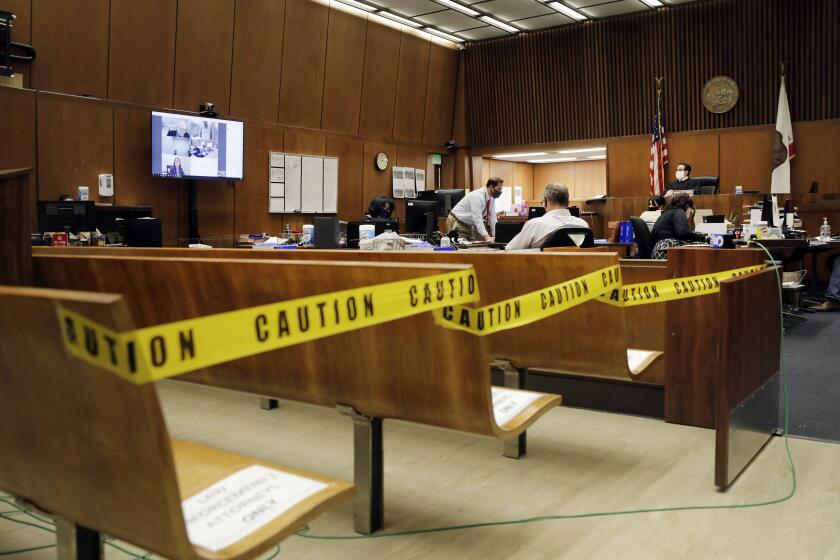111 terminally ill patients took their own lives in first 6 months of California right-to-die law

Six months since the right-to-die law went into effect, 111 Californians have taken their own lives. (June 28, 2017)
A total of 111 people in California took their own lives using lethal prescriptions during the first six months of a law that allows terminally ill people to request life-ending drugs from their doctors, according to data released Tuesday.
A snapshot of the patients who took advantage of the law mirrors what’s been seen in Oregon, which was the first state to legalize the practice nearly two decades ago. Though California is far more diverse than Oregon, the majority of those who have died under aid-in-dying laws in both states were white, college-educated cancer patients older than 60.
The End of Life Option Act made California the fifth state in the nation to allow patients with less than six months to live to request end-of-life drugs from their doctors.
Physician-assisted deaths made up 6 out of every 10,000 deaths in California between June and December 2016, according to state data. That’s much lower than the 2016 rate in Oregon, where lethal prescriptions accounted for 37 per 10,000 deaths.
But the findings have done little to calm the debate over whether allowing doctors to prescribe lethal medications is acceptable medical practice.
Supporters of the law pointed to data showing that 191 prescriptions were written, but only 111 patients had taken the pills as of the end of December.
Comparing California’s experience to Oregon’s
Oregon, January 2016 — December 2016
- 79% of those who died using a lethal prescription had cancer.
- 54% of those who died were male
- 96% who died were white, 1.5% Latino and 1.5% Asian
- 50% who died had a bachelor’s degree or higher
- 70% who died had Medicare, Medicaid or another type of government insurance; 30% had private insurance; fewer than 1% were uninsured.
- The rate of lethal prescription deaths was 37 per 10,000 total deaths in the state.

Often patients have long-held values and beliefs about what makes a life worth living, and want the peace of mind of knowing that if their conditions worsen, their pain increases, or they become more dependent on others, they won’t have to endure it, said Dr. Tom Strouse, a psychiatrist and palliative care doctor at UCLA.
They “want the option of saying, ‘That’s not how I’m going to live,’” Strouse said. “It’s a contingency planning approach, really.”
Alexandra Snyder, an attorney with Life Legal Defense Foundation and critic of the law, said California is now effectively decriminalizing assisted suicide. There’s no way to determine whether a patient was coerced into taking the drug, she said.
“It’s really tragic that doctors are now thinking that the best they can do for a patient is to give them a handful of barbiturates and leave them to their own devices,” Snyder said of the numbers released Tuesday.
Experts say the low usage numbers in California last year aren’t surprising since patients and physicians are still learning about the new law. In the first year that Oregon’s law was in effect, there were only 15 physician-assisted deaths, though that number had grown to 133 last year.
“The state’s data show that even during the early months of the law’s implementation, the law was working well and terminally ill Californians were able to take comfort in knowing that they had this option to peacefully end intolerable suffering,” said Matt Whitaker, who works for Compassion & Choices, an advocacy group that fought for the law’s passage. The organization released a report this month saying it knew of 504 people who had received prescriptions for lethal medications between June 2016 and June of this year.
Writing the lethal prescriptions is completely voluntary for doctors and medical facilities, and some, including all Catholic and church-affiliated hospitals, have not allowed their physicians to prescribe such medicines.
But Whitaker said that even those groups in California are having an open dialogue about the law and that, generally, he’s been “pleasantly surprised” by how much more willing doctors are to talk about the practice than they were in the early years in Oregon.
“They have really approached the issue head on, and not just closed their eyes and hoped it would go away,” he said.
Similar laws are being considered by several other states. In November, Colorado voters legalized the practice, bringing the percentage of Americans who live in states where the practice is legal to 18%.
California’s law still faces opposition from some corners. A judge ruled this month that a suit to overturn the law will be allowed to go to trial.
Snyder, who filed the suit, said that because the deaths are not investigated, the law “takes away certain legal protections that were afforded people who were sick and elderly and otherwise vulnerable.”
Strouse pointed out that under the law, doctors cannot initiate conversations about aid in dying with their patients. The patient must ask for the medicines themselves.
He said that doctors who do end up writing such prescriptions believe that they are providing people with protections for their personal autonomy.
Some doctors are still uncomfortable with the practice, and many patients’ families reported struggling to find a doctor who would write such a prescription.
California’s data show that 173 physicians wrote the 191 prescriptions statewide.
Sherry Minor’s husband, John, was suffering with a painful terminal lung disease last year. The 80-year-old retired psychologist had lost 80 pounds and could barely eat or talk.
“He just thought he couldn’t go on,” she said.
But they struggled to find a doctor who would participate under the law, until they switched to Kaiser and ultimately got a prescription.
“It was an enormous relief,” said Minor, who lives in Manhattan Beach. “He just felt more comfortable with that mentally.”
John Minor, surrounded by his family, took the pills in September 2016.
“John did what was right for him,” Minor said. “He died peacefully, rather than in agony, and he was in control. He didn’t feel afraid or helpless.”
ALSO
Fighting for her choice: ‘A more dignified and peaceful death’
UPDATES:
6:05 p.m.: This article was updated with reactions from experts and medical professionals and was rewritten throughout.
This article was first published at 1:30 p.m.
Start your day right
Sign up for Essential California for news, features and recommendations from the L.A. Times and beyond in your inbox six days a week.
You may occasionally receive promotional content from the Los Angeles Times.




